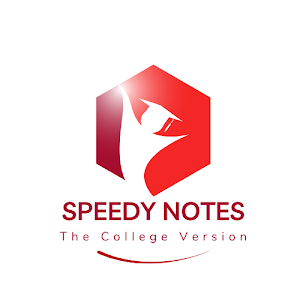[alert-primary] Figurative Language [/alert-primary]
[alert-primary] Figurative Language [/alert-primary]
[alert-info][btn href="https://www.speedynotes.in/2022/06/study-guides.html" target="_blank" class="bt lg bt-info" btn]Study Guide[/btn][/alert-info]
It should be noted that in these instances, the metaphorical term and the subject to which it is applied can be distinguished as two separate elements. I. A. Richards introduced the name vehicle for the metaphorical term itself (rose in Burns and the three words "gazelle," "wanderer," and "drinker" in Spender), as well as the name tenor for the subject ("my love" in the altered line from Burns and "eye" in Spender's lines). The tenor of an implicit metaphor is implied rather than explicitly stated. The situational and verbal context of the term "reed" indicates that it is the vehicle for an implicit tenor, a human being, while "storm" is the vehicle for an aspect of a specified tenor, "sorrows," if one were to say, "That reed was too frail to survive the storm of its sorrows," when discussing someone's death. Richards refers to the grounds of a metaphor as the characteristics, traits, or common associations of a vehicle that, in a specific situation, apply to a tenor.
A mixed metaphor combines two or more metaphorical devices that are obviously different. The effect can be absurd when used accidentally and without consideration for the potential incongruity of the vehicles: "Girding up his loins, the chairman ploughed through the mountainous agenda." However, densely figurative poets like Shakespeare frequently combine metaphors in a useful way. Examples include Hamlet's expression of his troubled state of mind in his soliloquy (III. i. 59–60), "to take arms against a sea of troubles, / And by opposing end them," and Shakespeare's Sonnet 65, "O, how shall summer's honey breath hold out?" which describes the intricate involvement of vehicle within vehicle in reference to the ageing process.
versus the wretched siege of trying days?
A dead metaphor is one that has been used for so long and been used so frequently that we have lost track of the difference between vehicle and tenor, such as "the leg of a table" or "the heart of the matter." However, many dead metaphors are only dormant and can be revived. Is Groucho Marx a mouse or a man, someone asked him? "Throw me a piece of cheese and you'll find out," he replied in response. Many words that we now take literally were once metaphors, according to the language history that has been preserved.
Metaphors are crucial to how language works and have been the focus of a great deal of analysis and controversy among rhetoricians, linguists, literary critics, and philosophers of language. Various points of view are discussed in the entry metaphor, theories of.
Some cliches, which are occasionally categorised as species of metaphor, are more frequently and effectively given names of their own:
Metonymy, which means "a change of name" in Greek, is the application of the literal name of one thing to another with which it has come to be closely associated as a result of a recurrent relationship in shared experience. Thus, "the crown" or "the sceptre" can stand in for a king, "Hollywood" for the film industry, "Milton" for Milton's writings ("I have read all of Milton"), and "doublet and hose ought to show itself courageous to petticoat" (Shakespeare, As You Like It, II. iv. 6).
A part of something is used to represent the whole in a synecdoche, which is Greek for "taking together," or (less frequently) the whole is used to represent a part. In common parlance, we refer to ten workers as "ten hands," a hundred sails as "a ship," and an automobile as "wheels." Milton's use of the phrase "blind mouths" to describe the dishonest and avaricious clergy in "Lycidas" is audacious.
Personification, also known as prosopopoeia in Greek, is a figure connected to metaphor in which an inanimate object or an abstract idea is described as if it were endowed with life or with human characteristics or feelings (compare pathetic fallacy). As Adam bit into the fatal apple and the sky lowered while muttering thunder, some sad drops wept at the completion of the mortal sin, according to Milton's Paradise Lost (IX. 1002-3).
In Aurora Leigh (I. 251–52), Elizabeth Barrett Browning wrote: Then, land!—then, England! oh, the frosty cliffs. John Keats' "To Autumn" beautifully personifies the season, autumn, as a woman carrying out the rural chores of that time of year.
coldly regarded me.
Abstract terms were frequently personified in poetry of the eighteenth century, where it occasionally devolved into a mindless formula. Coleridge cited an eighteenth-century ode written to commemorate the development of the smallpox vaccine that began with the apostrophe: "Inoculation! heavenly Maid, descend!"
Personification and the Sublime by Steven Knapp (1985).
The term "kenning" refers to the frequent substitution of a descriptive phrase for a thing's common name in the Anglo-Saxon Beowulf and poems written in other Old Germanic languages. This kind of periphrasis, which occasionally turns into a stereotyped expression, is a sign that these poems have their roots in oral tradition (see oral poetry). Some kennings use metonymy ("the whale road" for the sea and "the ring-giver" for a king"), others synecdoche ("the ringed prow" for a ship), and still others describe distinctive or beautiful characteristics of the thing being referenced ("foamy-necked floater" for a ship under sail, "storm of swords" for a battle).
Other word usage variations, which are frequently categorised as tropes, are covered elsewhere in this glossary. These variations include aporia, conceit, epic simile, hyperbole, irony, litotes, paradox, periphrasis, pun, and understatement. Since the middle of the 20th century, there has been a lot of interest in the analysis and functioning of figurative language, which was previously believed to be largely the domain of pedantic rhetoricians, particularly in the New Criticism, Russian formalism, and Harold Bloom's theory of the anxiety of influence. The analysis of figurative language is one of the main methods used in deconstructive criticism, especially in the writings of Jacques Derrida and Paul de Man.








0 Comments